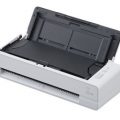
Suppose you’re sitting at your desk and your coworker comes along with a 5-inch thick binder. He hands it to you and then moves along. You start reading the stuff in the binder throughout your shift. You find that it contains a whole bunch of stuff about coffee. How it originated, how it affects the human body, and whatnot. After going through it all, you find a scribbled note at the end “Hey buddy. Hope you had fun reading this whole thesis. I just wanted you to grab me a cup of coffee from the break room.”
Fun, right?
When you are in a business environment, you need concise stuff. Whatever it may be, it should be concise and short. If it’s a business report, it needs to be short and succinct. If it’s a memo, it should be short and succinct.
In this post, we are going to look at why it is necessary and important to use summarized and concise documents in a professional setting. Let’s jump in.
- Concise Documents Take Less Time to Read
The over-the-top scenario that we gave at the start of this post is an ample portrayal of this fact.
The shorter a document is, the less time it takes to read. A short note jotted down on a little sticky note will be read in about 2 or 3 seconds whereas a large A4 size document will take the reader about a minute to go through it all. That is if the writing is regular-sized and not tiny like this.
Keeping a document short is handy for both the sender/writer and the recipient/reader. If the sender keeps the stuff short, they will be able to get whatever they need quickly. And for the reader, the benefit of a shorter document is that they will be able to read it quickly and get back to their work.
- Shorter/Smaller Documents are Easy to Store
Just as concise documents are easy to read, so too are they easy to store as well. Take an example. If you prepare a needlessly long document consisting of a couple of pages, it will take up more space in a binder or a file when placed in the filing cabinet.
Or, if you are not in an office from the 90s (which was around the time they used to have “filing cabinets”), then a long document will have the disadvantage of taking more space in the computer storage.
Even in the short-term, long and lengthy documents will have the downside of cluttering your desk or tabletop. This is something you won’t have to deal with if they are short and modest.
- Short/Smaller Documents are Easy to Send and Receive
What’s easier to carry: a thick file bulging with paper sheets or a folded-up notepad page? This is another benefit of shorter and smaller documents. They can be easily sent and forwarded around the office without being too much of a cumbersome hassle.
If you want to forward a small memo to a coworker at a desk a few feet away from you, you can simply fold it up and reach out with a small “Hey pal, grab this for me, will you?”
You can’t do the same thing with a big binder or a file. With these types of things, you’ll have to heave a sigh, push back your chair, carry it over to the coworker and place it on their desk.
How to Keep Your Documents Short and Concise?
We’ve huffed and puffed a lot about why short and concise documents are important and all, but we haven’t really touched on how you can come up with them in the first place. For the next part of this post, let’s take a look at that.
- Resort to Summarizing
If you have unintentionally made a particular document needlessly long, no worries. You can simply summarize it to the best of your ability and then use the shortened version.
To make a summary of the document, you can just go through it carefully and cross out any sentences or lines that you think are unnecessary. This can take a little time, though.
If you want to do the same thing quickly, you can take the help of a summarizing tool instead. There are plenty of such tools available online and you can easily find a free one on the internet.
A summarizing tool basically works by scanning the given text and then taking out meaningful sentences from it to create an extractive summary. An extractive summary is one that consists of the same phrases and words as the original text.
The better tool you pick, the better results you’ll get.
- Use Graphics
A picture is better than a thousand words. This is something we’ve heard a lot, haven’t we?
Explaining or describing something with words can be a little difficult as compared to using an image or a visual. For example, if you want to tell someone about a particular set of stats or figures, you can create a chart or a graph rather than talking about them all in written form.
This is also a good tip that you can keep in mind to keep your business documents short.
- Be Smart with the Formatting
You can’t really expect to keep your documents short if you keep your font size around 20 or 22, the line spacing at 2 inches, and the margins at 3 inches on all sides.
To keep your documents concise, you have to be smart with the formatting so that you use as little space as possible.
Conclusion
And that’s it.
The next time you want to send a memo to your coworker, remember that it does not have to be a whole essay. You should keep it as short as possible. The benefits that we’ve listed above are ample reasons for that.
As for how you should keep the documents short, you can follow the tips at the end of the post above. You’ll be good to go.






